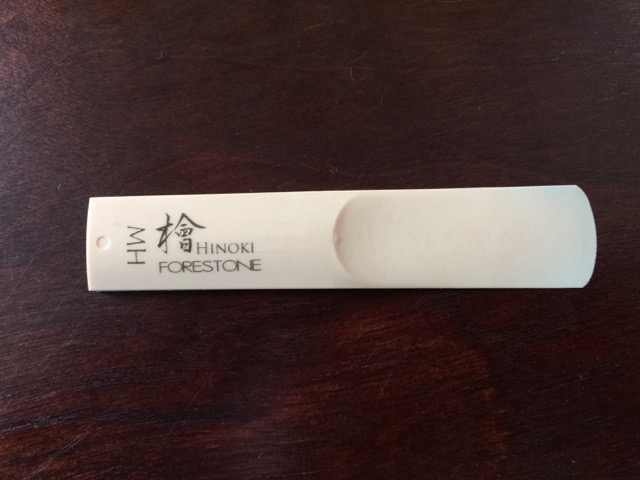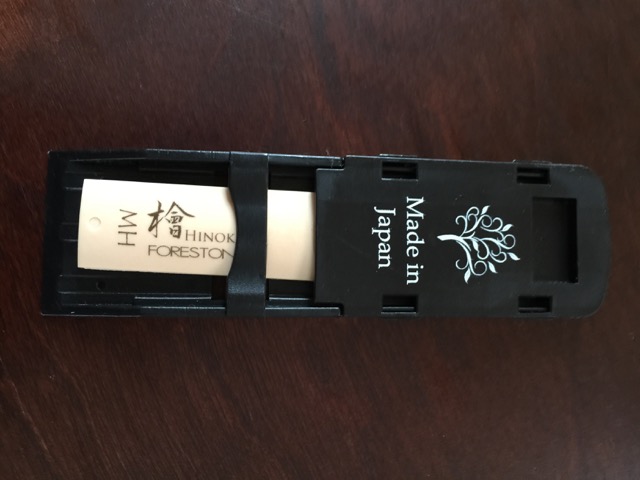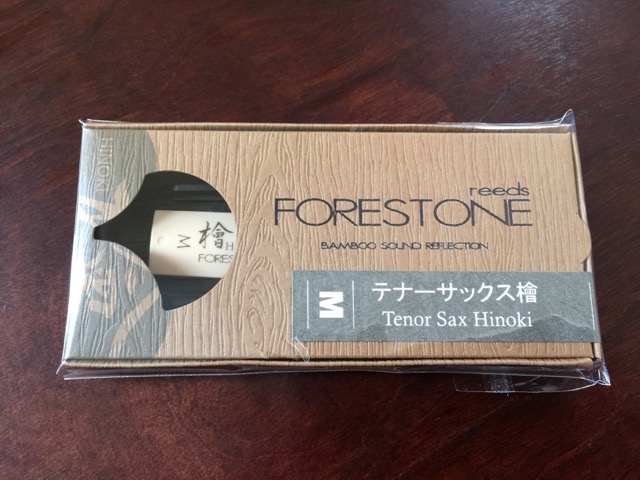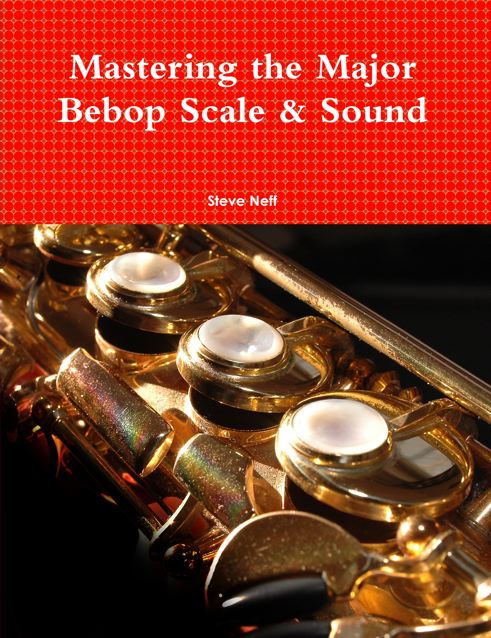Today, I am reviewing a product that I never ever thought I would review. The product is a synthetic reed. (*Before you read further, I need to state in all honesty, that I have always hated, detested and scorned every synthetic reed I have ever tried. Over the last 20 years I have at times tried different brands and makes and always been disappointed and also angry that I had just wasted another 20-25 dollars on a piece of useless plastic……….I wanted to disclose that immediately-Steve)
Now, I am well aware that some of you out there play and have played synthetic reeds for many years and love them. I have even met some of you during Skype lessons and you might have seen my face frown when you told me you play a synthetic reed and love them. I guess the reason for these negative feelings is based on the fact that throughout the years, I have read the usual promotional claims and quotes from endorsing artists, I get my hopes up that maybe “this reed” will work for me and I can save the 700-900 dollars a year I spend on reeds………so, I order a reed with high hopes. Even though I have been burned so many times before. The reed comes, I open it up, I try playing it, and my dreams and hopes are crushed yet again.
“It’s way too soft! It’s way to hard! The tone sucks! It’s too edgy! What’s with the squeaking! There is no evenness in tone from note to note! The tone reminds me of a chainsaw tearing a parakeet to shreds while it screams!” I could go on and on……..These are all real and true thoughts I have had……….
Forestone Hinoki Synthetic Reeds
So, a few months ago Tobias Haecker from Forestone reeds contacted me and asked if I would be interested in trying their new Hinoki synthetic reeds because he thought I would like them. The response that was in my head was “Look, I’m not really a synthetic reed guy. I’ve hated every synthetic reed that I’ve ever tried and I think this would be a huge waste of your product and my time”……..instead I emailed back “Sure, I’ll give them a try” (I’ve learned to not always go with my gut response on emails which has proven very wise over the years)
Forestone sent me some reed samples to try. The truth is that once they arrived I put them on the back corner of my desk thinking “I’ll get to them later when I have time” but the truth is I think I was scared to try them. Scared of the disappointment, the heartbreak, the loneliness, the utter despair and hopelessness that comes with trying a bad synthetic reed………Finally, one day, I summoned the courage and opened the package.
Forestone sent me a medium and medium hard reed for tenor and alto sax. From past experience with synthetic reeds, I assumed that the MH reed would be like playing a 2×4 so I went with the M reed. I put it on my 7* mouthpiece and blew………It played! Not only that but it played easily! I played up and down the horn for a few minutes and at one point a squeak popped out. “There it is! I knew it!” As I continued to play expecting more squeaks and chirps I was surprised when there were no more.
Forestone Hinoki Synthetic Reeds
After a little while, I decided to try the MH reed. To my surprise, this reed also played easily and felt great. It did feel slightly stiffer, as if I went from a 2 1/2 cane reed to a 3 but there was no stuffiness and it still blew easily.
I decided I liked the MH reed the best on the mouthpiece I was playing so I stuck with that for the sound clip below although I could have just as easily played the sound clip using the M reed as well.
This is what Tobia says about the Hinoki material and cut:
“ The Hinoki reed suits more the jazz and intermediate players which need a bit resistance but like it a little bit more free blowing than our traditional black and brown synthetic reeds with the strong heart. Also the unfiled cut which we used at the Hinoki is a better match up for all the American style faced mouthpieces.”
In the sound clip below, I decided to make two recordings of myself playing similar lines. One was on the Hinoki MH reed and one was on a Rico Select Jazz 3S Unfiled reed. I then mixed the two recordings together so that I say the name of the reed, play a line, then say the name of the other reed and play a similar line. I try to do this throughout the recording. Keep in mind that the clip wasn’t recorded in this way as I would have had to change reeds after every line which would have been a pain. Not to mention that placing the reed in different spots would have effected the sound and response and I didn’t want to mess with that variable also.
Forestone Hinoki Synthetic Reeds
What were my thoughts and impressions of the Forestone Hinoki reeds? Well, first off I have to give the Forestone company credit for actually producing a reed that I could play! This is huge for me and the first time I could even play a synthetic reed! I actually played it all week long on Skype lessons and it played great. The side benefit of a synthetic is that during one lesson I picked up my tenor to demonstrate something and even though I hadn’t played all day the Hinoki just played immediately without having to take it off the mouthpiece, wet it and flatten the warpage of a cane reed.
I found the tone of the Hinoki reed to be a bit different than a good cane reed. The high notes seemed more prone to getting edgy with my normal bottom lip embouchure but I noticed that if I made my bottom lip a little fatter and more “pillowy” it took much of the edge away. On a cane reed, I can make my bottom lip a bit harder and flatter and can brighten the sound and give the tone some more edge. This was also true on the Hinoki but I felt like the edge could easily get to be too much so for me I had to balance that out with my embouchure to keep the tone where I wanted it.
I also found that the reed responded to my embouchure in slightly different ways than a cane reed. Usually, when I am playing, my bottom jaw and lip are moving quite a bit to add variation and expression to the tone. There was a number of times where my normal movement didn’t quite produce the effect I was going for. I take this not as a deficiency of the reed but more as a fact that there is a learning curve with playing these new reeds. I’ve been playing cane reeds for 35+ years. A synthetic reed for a couple of hours! I have a strong feeling that if I play these Hinoki synthetic reeds more I will learn how to get the most out of them…….
The tone of varied notes on the sax was subtly different than with my cane reeds also. Some notes were brighter than usual and some notes seemed darker and more subdued than on a cane reed. I found that this also could be manipulated by taking more and less mouthpiece in my mouth for the different ranges of the horn to get closer to the sound in my head. Even though I found the notes a bit different in tone at times, I still felt the evenness of the notes was excellent throughout the range of the horn.
I do think the cane reed in the comparison clip has a deeper richer sound to it. A bit sweeter and rounder sounding perhaps. The Hinoki sounded a little bit edgier to me in the clips. I do think the Hinoki is in the ballpark though. I’d have trouble telling it was a synthetic if I wasn’t announcing it on the clip like I did. (I was tempted to post the clip as a blind test but I know all of you hate those tests so I refrained.)
Just a few added notes: The Medium Hinoki reed felt little harder than a Vandoren Java 2 1/2 reed. I have a few 7* mouthpieces with 48 facing lengths that love 2 1/2 Javas but the Hinoki medium felt a bit harder than the Java on those pieces. On my 7* tenor pieces with a 50 facing length the medium and medium hard played much easier so if you have a 48 facing length on your piece I might go with a MS reed. I haven’t tried the MS reed so this is just a guess on my part. On a 50 facing length 7* the medium plays great but it felt a little soft when I tried to wail on it. I preferred the MH because of that on the 7* mouthpiece I tried them on.
Also, I think that cane reeds will naturally soak up excess saliva that might make it’s way to the mouthpiece. With a synthetic reed there is no where for this saliva to get soaked up so a side affect can be that you get a “spitty” or “bubbly” sound in the tone from the saliva on the reed. I didn’t have this problem all week but this morning I had a coffee while playing and I think I was salivating like crazy. I kept noticing this “bubblie” effect on the synthetic reed but not the cane reed at all so I thought I would add that tidbit of info to the review…………
Forestone Hinoki Synthetic Reeds
I’m told by Tobias at Forestone that he changes his reed every 3 to 4 months of heavy professional playing which sounds like heaven to me as I change my reed every 2-3 days usually. (although he has said he has heard from people that have used one Hinoki reed for more than 2 years!) He says that at the end of the reeds life they start to lose reactivity and become a little bit flabby like a cane reed can, but these last much longer.
If you read this review, listen to the clip and want to try the Forestone Hinoki reed they are easily available at many retailers such as Sax Alley, Thomann in the UK, or you can use the Forestone store locator on the Forestone website. In my opinion, whether you are like me and detest synthetic reeds or you are a synthetic reed player and want to try something new, these new Hinoki reeds are worth checking out and trying. Maybe later I will add a blind test to see how well you guys hear a difference…………… Let me know what you think in the comment section below. Well done Forestone!!
Forestone Hinoki MH Synthetic Reed & Rico Jazz Select 3S Unfiled Reed Comparison Clip







Well, they sound much the same, and have a nice warm sound. Can you give me an Idea of what the feel in compaired to the RICO /, Like is ther any back pressure or is it like playing into an open space. I found with Fibracell that it blew so easy that I didn’t get the feel of a Cain Reed, and didn’t like that feel. I couldn’t seem to get the expression out of the Horn (Yani 880 Alto) that I get with a real Cane Reed. Just no Feel, and very edgey. I guess you could say, Just like playing with a Plastic Reed.
Wayne,
Maybe it’s not so apparent on the audio but the Hinoki is a bit brighter tha the RSJ reeds. I found it was edgier until I learned how to adjust to it. It only took a few minutes of playing though to lessen the edge. I found a nice resistance with both the M and the MH although the M had less than the MH. Like I said in the review, the M felt too soft for me when I tried to wail on it. The MH felt great. Nice resistance and comfortable back pressure but not too much. Although I have the two alto reeds also, I haven’t tried those yet. I can try them out tomorrow probably. I would think they are comparable to the tenor reeds but you never know………Hope this helps, Steve
I realize this review is from December, 2015, but I wanted to thank you for steering me towards these reeds. I just tried these Hinoki reeds on alto and tenor tonight. I was lucky to get the perfect size for my mouthpieces. I use the Gaia 4 on alto, tenor, and soprano.
I have never found a synthetic reed that works for me and these reeds actually work. The alto reed sounded better than the tenor. I was using my hard rubber Gaia 4 (size 7) alto mouthpiece with my warmer sounding neck and I was astonished that this reed plays so easily. I am playing the entire range of the sax very evenly and like butter. I am actually getting warmer sounding high notes on this Hinoki reed (size M) than I get with the Rigotti Gold Reeds. I could actually use this reed on a gig.
The Roberto’s Winds are still my favorite reeds for alto and tenor. On tenor I usually love playing with my metal Gaia 4 (size 7*), but I thought this Hinoki reed was a little too bright, so I tried using this reed (size M) with my hard rubber Gaia 4 (size 7*) and it sounded much better. I am playing the low notes like butter and I’m playing the high notes and altissimo in tune… I think it is still a little better on the high notes than the Rigotti Gold.
For soprano, I got the Forestone White Bamboo reed, size 3.5. It matches perfectly with my Gaia 4 (size 7) soprano mouthpiece. I am actually getting a more warm and beautiful sound with this White Bamboo reed on soprano than I get with most other brand jazz reeds. My favorite soprano reed is the D’Addario Reserve reeds (size 2.5). Next I am going to try the White Bamboo reeds on alto and tenor. I could actually play this White Bamboo soprano reed on a gig.
It’s great luck for me that the size of these reeds I got today are the perfect size for me and my mouthpieces. These sizes might be a little soft for other sax players. The comparison charts that Forestone has made are wrong. Their reeds are a little softer than the comparison chart shows. I read other sax players’ experience with these reeds, so I went up a size when I ordered these reeds.
I tried the Legere Signature reeds a few years ago. If I used a soft Legere reed, I could get a warm and beautiful sound, but the high notes would be too thin and too difficult to play in tune. If I used a Legere reed that was hard enough for the high notes to play well, then the rest of the range would be too bright and edgy and too hard on the embouchure. I was looking at videos of people’s reviews of the newer D’Addario Venn reeds and it looks like this reed comes close to getting a nice sound, but every sax player and clarinetist that I watched all said that the reed was too difficult on the embouchure. I still might try one in the future because I’m good at adjusting reeds and I think the Venn reeds can be adjusted.
I often thought about trying them. I tried another Synthetic company and it never worked for me and the sound waS NOTHING LIKE A CANE REED. MaYBE i WILL TRY THESE . Vinny
Sounds a lot closer than I thought it would. I’ve tried a few synthetic reeds and never liked any of them. There does seem to be a very slight buzz on the Hinoki. The Rico does have a warmer sound. Still I’m thinking about buying a Hinoki and using it when I’m teaching to save some bucks.
Don
I meant to say I’d use a Hinoki to practice but still use cane for performance.
What is the setup you play with those reeds?
Hans, I’m playing a new Tenor Madness EB II 7* with a Vandoren Optimum Ligature. I’m working on a review of the TMEB II but for those reviews I try to find the best reed I can for a piece. Here, I just slapped these two reeds on and recorded to show the difference between the two.
Is the horn a Mark VI?
No, SBA
Thanks for the Forestone review. I’m one of those guys you frown upon since I’ve been playing Fibracell reeds for several years exclusively on Alto and Tenor. Soprano still gets cane. Having tried several synthetic reeds over the years including Legere, Harry Hartmann and Forestone, the Fibracell just work great and last forever. A typical gig is Alto, Tenor, Soprano. So the reed has to be ready to go, especially here in this desert climate. All my mpcs are Theo Wanne which in my experience can be reed fussy with cane, but never with the Fibracell. Yes they are a bit edgy compared to cane, but I can compensate with my mpc choice and reed strength depending on what the gig requires. The Forestone I had was not the Hinoki but I think I’ll give it a try. In your demo I did hear a slight (very slight) more edge in your playing with the Hinoki vs. cane but it still sounds great and to me it just comes down to player preference. Again, appreciate your review and candid comments on new products.
Can you alter them with a Reed Geek and clip the tip if necessary? I never get a reed that is just right, so these would only make sense for me if I could do some work on them. Thanks for the reviews, as ever.
Hi Andrew,
I have no idea on how they respond if you try to alter them. Mine play well as is so I don’t want to mess with them yet. Maybe towards the end of their life I’ll try clipping one and see what happens. Maybe someone will try it and let us know the results in the meantime………Steve
Hi Steve
Thanks for the review, I tried the 1st Forestone out yrs ago & was not impressed..way too hard/stiff,but looks like this one is worth a test. They can be filed/sanded/razor bladed a bit to open them up I find.
One question..are they sharp on the sides..some I use cut my lips as so sharp(mostly carbon fiber ones)
Shantiu,
I don’t find these Hinoki reeds sharp on the sides at all. Steve
Hi steve. Thanks for doing the review on this reed. I too have always hated synthetic reeds, but do like the sound of the Hinoki reed.I play a lot and go through reeds like crazy. Very costly and have too end up throwing a lot of them away.Will give it a try.
I am a devotee of the Forestone Black! Still, the grading is problematic!
Hello everybody!
Thanks for the review. Very didactic. I play soprano, tenor, alto and bari on my gigs. Supertramp, alan parsons, tears for fears etc…, and I need a reed ready to go during all the show. I use Hahn’s reeds for all of them. How would you compare both? My Hahn’s resource is not available anymore and I’m looking for something new. Are they better?
Do they work well for classical too? A simple try of one of these will cost a lot since I live in Brazil. U$ 1,00/R$4,00. It kills me! But I can make an effort. Maybe I’ll try a tenor one. I think the edgier tone will work for me. I have to cut through a very loud rock band!
What do you think?
Ze,
I don’t believe i have tried the Hahn reeds so I can’t compare them to the Hinoki reeds. I have been told that some classical players like the black Forestone reeds but as a jazz player I really preferred the Hinoki brand over the black cuts. Steve Steve
Steve – thanks for the detailed review. I loved your colorful descriptions of past disappointments – the heartbreak and loneliness, etc. That’s been my experience as well! On the strength of your review I ordered a couple of Hinoki reeds – both mediums, one alto and one tenor. For reference, I use one of Phil Engleman’s reworked Meyer 7s for alto and a Theo Wanne Gaia 7 (metal) for tenor.
First impressions of the Hinokis are very good! I echo your observations – a good cane reed is still more resonant and rounder sounding, and seems capable of a bit more expression. But the Hinokis are better that at least half the cane reeds that I get. I will be using these from now on for practice, and may buy a couple more to throw in the horn cases as a good reliable backup reed. I would not hesitate to play one of these on a gig if I needed to.
I bought one to try after reading this review and I like it a lot. I think it gives me better projection when I’m trying to blast away as lead in a band of 25 saxes, and at all times it’ll at least be in my case as a very good fall back.
Thanks for the review.
That’s great to hear Gerry. Hope it saves you a ton of money on reeds! Steve
Forgot to mention altissimo pops out really easily.
I love my Hahn reeds. Was a devotee of Fibercell before they redesigned them. The plastic layer on the back of the reed sometimes wrinkled or came off. I play every day in lessons, gigs every other week and two church services on Sunday. The current Hahn has been on my alto for 15 months (no kidding). I simply soak it briefly in denatured alcohol once or twice a week and it keeps on blowing. Unfortunately these reeds are no longer available, but I have about 12 stashed away that should last forever. Very said story about Dieter Hahn, the designer who suffered a stroke, had a leg amputated and was deported back to Germany from Argentina. Latest whereabouts unknown. I recommend Legere for my sax and clarinet students and they sound good. Not near as sturdy as the Hahn fiberglass however (they can crack and split). Hahns also have a tendency to get harder as you play them (which I think is great–unless your lips are giving out). I like harder reeds anyway; my Hahns are 4s. I look forward to checking out the Forestones. Harry Hartmanns were pretty buzzy. Although they look like Hahns, the sound is nowhere close…
Great review thanks Steve
I have been using a x4 Plasticover reed on my Selmer Super action 2 Alto – Bought a H Forestone Hinoki recently and am loving it. Even at the South African Rand equivalent of R1 = 0,07 USD its worth it!
My pair of hinoki have been going over a year.
Sometimes I wear out a box of cane which goes in a flash.
Java reds are nice, for a little while, some of them.
Then back to the hinoki. Good sound Consistant and wont die.
Dont squeak and easy over the whole tonal range.
I have been playing Forestone reeds now for about 6 months. Tried all three, Hinoki, Unfiled and the Black Bamboo. Of the three I prefer the Hinoki most of the time. It seems more to my liking with my 7* Jody Jazz mouthpieces. For woodshedding I use the other 2 in a rotate fashion. I do prefer the Hinoki 1st, unfiled 2nd and Black Bamboo third for tone, tuning and top to bottom action. Play these on PMariat Tenor.
After having good luck on the Tenor, I bought one for my Clarinet. I will never go back to
bamboo on the clarinet as long as the Hinoki’s are around. As a Sax/Clarinet/Flute big bander, being able to pick up the Clarinet and play it without squeeks, licking, tuning etc. is a huge benefit. Just IMHO. Really like your site. Thanks for the hard work.
hey digging your stuff steve…you have some great 2-5s 🙂 I tried these reeds..to me very effortless,makes my horn sing with NO effort)don’t know if that’s good or bad the other reeds,cane exactly are great when you break them in but if you have no time ,(working a job other than saxophone) and play your axe when you can but need to probe all the possibilities of sound this reed is very cool.. excellent response..just killer in my humble opinion
Hi Steve,
Just wondering after all this time, are you still using and digging these reeds?
Also, thanks for all the great stuff on this site. Wish I had time to work with more of it.
When a légère reed on a mouthpiece doesn’t work, I put on a forestone, and then it works good.
From this review I decided to give the Hinoki a try. It’s my first synthetic, after years of hearing of disappointing results with other synthetics. I had doubts that the Hinoki could match the richness and complexity I get with my trusty La Voz MH reeds on a NY STM 9 Link, but decided I might at least extend the life of my cane reeds by practicing with the Hinoki. The reed comparison chart shows the Hinoki H equivalent to the La Voz MH, so that is the one I selected. That’s with my other concern that the bright buzzy edge might be more prominent with one of the softer reeds.
My initial impression of the Hinoki fit my preconceptions. The first thing I noticed was that it’s a very free-blowing reed. My La Voz usually take some adjustment to get a good low end response, while the Hinoki played beautifully right out of the box with no response issues throughout the range. But the bright buzzy edge was definitely there and hard to counteract without producing a tone that was basically dull. The timbre seemed somewhat uneven through the range, with the brightness most prominent in the upper register A to C# range. So it seemed a good practice reed but not particularly pleasing. But then……
Being a tinkerer and having read about how reed cross-sections influence harmonics, I set about shaving the reed, a little along the heart to boost the lows and a lot more between the heart and the side rails to make richer harmonics, doing frequent play tests. Lo and behold, it boosted the midrange harmonic content. It was closing in on what I liked most about the La Voz. After a certain point the differences between the Hinoki and the La Voz seemed subtle enough that I decided to borrow some discerning ears to compare the two. A piano player who I work with had an immediate hands-down preference for the Hinoki, saying it has a much bigger, clearer sound than the La Voz. My solution to the buzzy edge of the Hinoki was not to suppress it but to boost midrange harmonics that make it less conspicuous. I now have six jilted La Voz reeds.
That’s great to hear. Thanks for sharing your review of the Hinoki reeds and how you improved them by working on them a little bit. I have to be honest in saying that I would be a bit nervous working on a synthetic reed that is so much more expensive than a normal reed (which are also pretty expensive…..) Steve
Hi Steve, it’s been some time since last comments were made on the Hinoki here.
I came across the brand/model Hinoki only recently, as I am looking for an alternative to my alto Legere AC 2.5 as a cost measure/practice reed.
I looked up for any review on them and was pleased to have found you have done one.
I decided to try the alto Hinoki M, it plays to my liking, good tone on the entire range. Then I discovered I sometimes cannot produce a sound attempting staccato. I did not order a higher strength reed to compare.
I have read that some who have tried Hinoki did find the tip to be generally thin which I concur.
Once I move the reeds tip beyond the mouthpiece tip, staccato works better.
I would like to know if there was a chance you might have spent more time on the Hinoki since your review. Any different or new opinions you may have on them.
Appreciate any other input you may have too.
Thanks
Ben
Hi Ben, Unfortunately, It has been many years since my review and I have relied on cane reeds since that time. Although the Hinoki reeds did play well for me, I am still a fan of a great cane reed.
Steve,
Thats understandable, I too believe the right cane delivers the best all round sound, once reed prep and minding their rotation is already a habit, not a hassle. Synthetic just provides a convenience.
Rgds
Ben